When you became a parent, you probably received all kinds of advice, whether you wanted it or not. This info can be overwhelming and sometimes conflicting, especially when it comes to teething.
There are different signs and symptoms of teething, and each baby is different, so it can be confusing to know when a tooth is coming or if it’s something else. To help you tell fact from fiction, we’ve rounded up six of the most common teething myths that every parent should know.
Myth #1: Fever is a sign of teething.
Many symptoms are often blamed on teething, and fever is one of them. While studies by the American Academy of Pediatrics (AAP) have shown that the teething process may cause a slight elevation in body temperature, it’s not enough to spike a fever. A body temperature of 100.4 degrees or above means something else is going on. Teething babies love to put things in their mouths, so it’s easy for them to get sick.
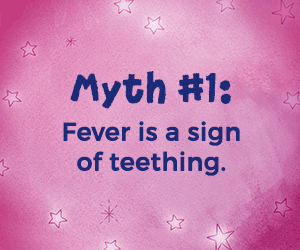
Myth #2: It’s too early for teeth.
Many babies are between the ages of 4 and 6 months old when those first bottom teeth (lower central incisors) emerge. However, if teething starts sooner, it’s nothing to worry about. In fact, some infants are born with one or more teeth, called “natal teeth.”
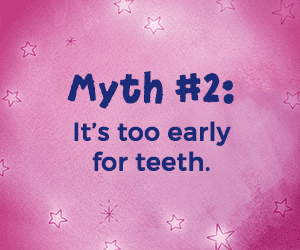
Myth #3: A delay in teething means something is wrong.
If your baby hasn’t cut a tooth by six months, don’t be alarmed. Some children are just late bloomers, and that’s okay. Your baby’s teeth already started forming under the gumline before birth but may not come until as late as 12 months.
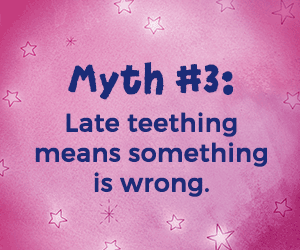
Myth #4: Teeth come in randomly.
While it may appear random, teeth do come in a certain sequence and usually in pairs. Typically, the central incisors are first, followed by the lateral incisors, first molars, and then canines. Last to arrive are the second molars. It’s important to know that not all children will follow this schedule exactly, so don’t worry if you notice teeth appearing a bit out of order.
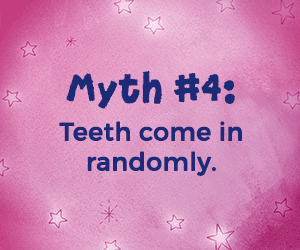
Myth #5: It’s easy to recognize when a baby is teething.
Not true! All children are different. Ear pulling, drooling, and fussiness are common teething signs, but not every baby will display them. A quick examination of your baby’s gums may provide more insight if you can persuade him to open his mouth. Look for bruised or swollen areas on the gums or use your finger to feel for a bulge of a tooth about to poke through.
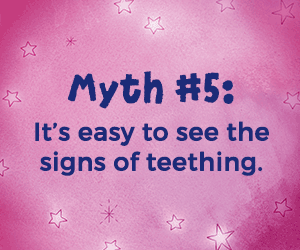
Myth #6: Babies don’t need a dentist yet.
You might think that a dentist isn’t needed until all your child’s teeth are all in, but the American Academy of Pediatric Dentistry (AAPD) recommends coming in much sooner. A dental check-up should happen after that first tooth erupts or by age 1. An oral examination is important for your baby’s primary teeth, as cavities can occur, and your dentist can make sure teeth are developing properly.

For more advice about baby oral hygiene, read how you can make brushing fun and easy.

